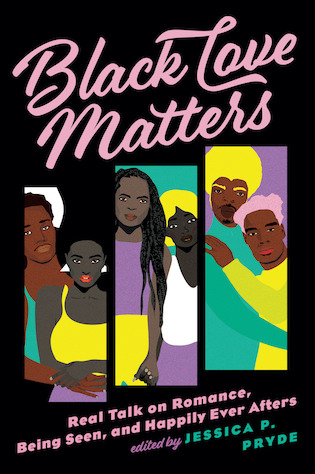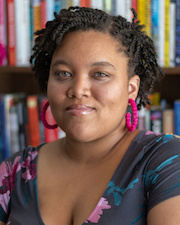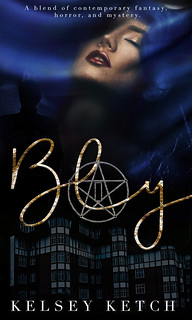Book Blitz - Black Love Matters by Jessica P. Pryde

Black Love Matters: Real Talk on Romance, Being Seen, and Happily Ever Afters
Jessica P. Pryde
Publication date: Feburary 1st 2022
Genres: Literary Fiction, Romance
An incisive, intersectional essay anthology that celebrates and examines romance and romantic media through the lens of Black readers, writers, and cultural commentators, edited by Book Riot columnist and librarian Jessica Pryde.
Romantic love has been one of the most essential elements of storytelling for centuries. But for Black people in the United States and across the diaspora, it hasn’t often been easy to find Black romance joyfully showcased in entertainment media. In this collection, revered authors and sparkling newcomers, librarians and academicians, and avid readers and reviewers consider the mirrors and windows into Black love as it is depicted in the novels, television shows, and films that have shaped their own stories. Whether personal reflection or cultural commentary, these essays delve into Black love now and in the past, including topics from the history of Black romance to social justice and the Black community to the meaning of desire and desirability.
Exploring the multifaceted ways love is seen—and the ways it isn’t—this diverse array of Black voices collectively shines a light on the power of crafting happy endings for Black lovers.
Jessica Pryde is joined by Carole V. Bell, Sarah Hannah Gomez, Jasmine Guillory, Da’Shaun Harrison, Margo Hendricks, Adriana Herrera, Piper Huguley, Kosoko Jackson, Nicole M. Jackson, Beverly Jenkins, Christina C. Jones, Julie Moody-Freeman, and Allie Parker in this collection.
—
EXCERPT:
A Short History of African American Romance
Beverly Jenkins
Slave narratives were the first instrument used by African Americans to tell their own stories, so, in order to examine the history of African American romance, we must begin there. One of the earliest narratives my research turned up was one by Briton Hammon, published in 1760. It’s memorable for the title’s content and its length:
A Narrative of the Uncommon Sufferings, and Surprizing Deliverance of Briton Hammon, a Negro Man,-Servant to General Winslow, of Marshfield, in New-England; Who Returned to Boston, after Having Been Absent Almost Thirteen Years. Containing an Account of the Many Hardships He Underwent from the Time He Left His Master’s House, in the Year 1747, to the Time of His Return to Boston.-How He Was Cast Away in the Capes of Florida;-The Horrid Cruelty and Inhuman Barbarity of the Indians in Murdering the Whole Ship’s Crew;-The Manner of His Being Carry’d by Them into Captivity. Also, an Account of His Being Confined Four Years and Seven Months in a Close Dungeon,-and the Remarkable Manner in Which He Met with His Good Old Master in London; Who Returned to New-England, a Passenger in the Same Ship.
Try putting that title on a book today.
Narratives by women don’t show up until more than half a century later, in 1831, with Mary Prince, a West Indies-born woman whose dictated story became Great Britain’s first published account of an enslaved Black woman’s life:
The History of Mary Prince, a West Indian Slave. Related by Herself. With a Supplement by the Editor. To Which Is Added, the Narrative of Asa-Asa, a Captured African.
Her story was published as calls for the abolition of slavery were on the rise.
I was immediately sent to work in the salt water with the rest of the slaves. This work was perfectly new to me. I was given a half barrel and a shovel and had to stand up to my knees in the water, from four o’clock in the morning till nine, when we were given some Indian corn boiled in water, which we were obliged to swallow as fast as we could for fear the rain should come on and melt the salt. We were then called again to our tasks and worked through the heat of the day; the sun flaming upon our heads like fire and raising salt blisters in those parts which were not completely covered. Our feet and legs, from standing in the salt water for so many hours, soon became full of dreadful boils, which eat down in some cases to the very bone, afflicting the sufferers with great torment. We came home at twelve; ate our corn soup, called blawly, as fast as we could, and went back to our employment till dark at night. We then shovelled up the salt in large heaps, and went down to the sea, where we washed the pickle from our limbs, and cleaned the barrows and shovels from the salt. When we returned to the house, our master gave us each our allowance of raw Indian corn, which we pounded in a mortar and boiled in water for our suppers. We slept in a long shed, divided into narrow slips, like the stalls used for cattle. Boards fixed upon stakes driven into the ground, without mat or covering, were our only beds. On Sundays, after we had washed the salt bags, and done other work required of us, we went into the bush and cut the long soft grass, of which we made trusses for our legs and feet to rest upon, for they were so full of the salt boils that we could get no rest lying upon the bare boards.
Although the United States had banned importation of slavery in 1800, and the UK in 1807, the institution remained firmly entrenched. Mary Prince’s account moved so many people, the book sold out three printings in its first year. Little is known about her after the printings other than three lawsuits that were filed as a result of the book. Prince testified at all three. One was brought by the master of the salt ponds, who said he had been defamed. He eventually won.
Prince’s narrative was followed by those of such notable women as:
Truth, Sojourner, 1797-1883. Narrative of Sojourner Truth, a Northern Slave, Emancipated from Bodily Servitude by the State of New York, in 1828. Edited by Olive Gilbert. Boston: The Author, 1850.
Jacobs, Harriet Ann, 1813-1897. Incidents in the Life of a Slave Girl. Written by Herself. Edited by Lydia Maria Child. Boston: The Author, 1861.
Elizabeth, 1766-1866. Memoir of Old Elizabeth, a Coloured Woman. Philadelphia: Collins, 1863.
Elizabeth, 1766-1866. Elizabeth, a Colored Minister of the Gospel, Born in Slavery. Philadelphia: Tract Association of Friends, 1889.
Dubois, Silvia, 1768-1889. Silvia Dubois, (now 116 years old): a Biografy of the Slav Who Whipt Her Mistres and Gand Her Fredom. Edited by Cornelius Wilson Larison. Ringoes, NJ: Larison, 1883.
So we as a race began telling our stories first of bondage, and then of escape.
Brown, Henry Box, 1815-1897. Narrative of Henry Box Brown, Who Escaped from Slavery Enclosed in a Box 3 Feet Long and 2 Wide. Written from a Statement of Facts Made by Himself. With, Remarks upon the Remedy for Slavery. Edited by Charles Stearns. Boston: Brown and Stearns, 1849.
Henson, Josiah, 1789-1883. The Life of Josiah Henson, Formerly a Slave, Now an Inhabitant of Canada, as Narrated by Himself. Edited by Samuel A. Eliot. Boston: A. D. Phelps, 1849.
After escape came narratives of freedom:
Keckley, Elizabeth Hobbs, 1818-1907. Behind the Scenes,
or, Thirty Years a Slave and Four Years in the White House. New York: G. W. Carleton, 1868.
Love, Nat, 1854-1921. The Life and Adventures of Nat Love, Better Known in the Cattle Country as “Deadwood Dick.” By Himself. A True History of Slavery Days, Life on the Great Cattle Ranges and on the Plains of the “Wild and Woolly” West, Based on Facts, and Personal Experiences of the Author. Los Angeles: The Author, 1907.
So how and where does romance fit into these narratives of telling our own stories?
They begin with the optimism that the race embraced after the Civil War. The abolition of slavery brought not only sweeping change to the three million people who’d been held captive against their will under threat of violence in the South, but changes for a nation that saw a Black governor and lieutenant governor in Louisiana. Integrated legislatures in places like Florida, Mississippi, Georgia, and South Carolina. Two United States senators from Mississippi and twenty-one Black congressmen from all over the South from 1870 to 1901. We as Black people were optimistic about everything from education to owning our own businesses, and the HEA was pursued by formerly enslaved men who spent months and even years walking across the South from plantation to plantation, looking for their wives sold away by slavery. (Even as we still fight the stereotype that our men don’t love.) These days also brought hope that the country would live up to the promises stated in the Constitution and that we as a race would get our HEA. But it didn’t happen.
When Reconstruction died in 1876, ushering in the hateful, bloody years of Redemption, hope began to falter, but ironically, Black women like Frances Ellen Watkins Harper and Pauline Hopkins held on to that hope and became two of the race’s first romance writers. Their stories were based on what scholars called the Victorian love and marriage plots-complete with happy endings. I was surprised to learn that Harper had written one of the earliest romance novels, Iola Leroy, or Shadows Uplifted, because she is more remembered for being a poet, lecturer, and fiery speaker for abolition and for suffrage, especially for Black women battling both sexism and racism.
Born free in Maryland in 1825, Frances Ellen Watkins Harper became an orphan at the age of three when both her parents died. She was raised by an aunt and an uncle who was a staunch abolitionist and the founder of the Watkins Academy for Negro Youth, which Frances attended. She published her first book of poetry, Forest Leaves, at the age of twenty and, at the age of twenty-six, became the first woman instructor at Union Seminary, a school for free African Americans in Wilberforce, Ohio. When the state of Maryland passed the law forbidding free Blacks’ entry into the state, she was unable to return home, and so moved in with Philadelphia’s William Still, the famous underground railroad conductor, and his wife, Letitia. Encouraged by the Stills, Frances began writing poetry for anti-slavery newspapers. Her poem “Eliza Harris” was published in William Lloyd Garrison’s The Liberator and the newspaper Frederick Douglass’ Paper.
An 1859 letter penned by her to the condemned John Brown, offering her support of him and his wife, was smuggled into his cell. It somehow wound up in the newspapers and was reportedly read by tens of thousands of Americans; it thrust Frances onto the national stage. Also that year, her story “The Two Offers” was published in The Anglo-African Magazine, earning her the distinction of being the first Black woman to publish a short story.
For the next decade she traveled across the United States and Canada, speaking out against enslavement on behalf of anti-slavery organizations that had hired her as a traveling lecturer. She also spoke on suffrage. In May 1866, she spoke at the eleventh National Woman’s Rights Convention in New York, sharing the stage with Elizabeth Cady Stanton and Susan B. Anthony. Her speech, “We Are All Bound Up Together,” touches upon the state of the nation and her desperate attempts to provide for her children after her husband’s untimely death. She took white suffragettes to task for their efforts to exclude Black women from the conversations and activism tied to women’s rights. The speech is as relevant today as it was then. Reading it gives a good sense of who she was and where she stood. As does this quote from the speech: “I do not believe that white women are dew-drops just exhaled from the skies. I think that like men they may be divided into three classes, the good, the bad, and the indifferent.”
In the years after, she would break with Stanton and Anthony over their denunciation of the Fifteenth Amendment, and go on to help found the National Association of Colored Women’s Clubs in 1896. She died on February 22, 1911.
Harper is known for many firsts, but her 1858 poem “Bury Me in a Free Land” was as iconic to the pre-Civil War abolition era as “We Shall Overcome” would be for US civil rights. It was read to open and close anti-slavery meetings, was recited at churches and funerals, was tacked on walls of African American homes, and was memorized by African American schoolchildren all over the quasi-free North.
Bury Me in a Free Land
Make me a grave where’er you will,
In a lowly plain, or a lofty hill;
Make it among earth’s humblest graves,
But not in a land where men are slaves.
I could not rest if around my grave
I heard the steps of a trembling slave;
His shadow above my silent tomb
Would make it a place of fearful gloom.
I could not rest if I heard the tread
Of a coffle gang to the shambles led,
And the mother’s shriek of wild despair
Rise like a curse on the trembling air.
I could not sleep if I saw the lash
Drinking her blood at each fearful gash,
And I saw her babes torn from her breast,
Like trembling doves from their parent nest.
I’d shudder and start if I heard the bay
Of bloodhounds seizing their human prey,
And I heard the captive plead in vain
As they bound afresh his galling chain.
If I saw young girls from their mother’s arms
Bartered and sold for their youthful charms,
My eye would flash with a mournful flame,
My death-paled cheek grow red with shame.
I would sleep, dear friends, where bloated might
Can rob no man of his dearest right;
My rest shall be calm in any grave
Where none can call his brother a slave.
I ask no monument, proud and high,
To arrest the gaze of the passers-by;
All that my yearning spirit craves,
Is bury me not in a land of slaves.
Harper’s 1892 romance, Iola Leroy, has an interesting plot, for the times. Our heroine, Iola, is a light-skinned, blue-eyed woman who doesn’t realize she’s Black until after the death of her wealthy planter father, when she and her mother are sold into slavery by an unscrupulous relative. Lots of drama ensues. Refusing to pass, she embraces her racial roots and becomes a nurse during the Civil War. She eventually falls in love with a Black doctor. They find their HEA, and both continue to devote their lives to uplifting the race. Dr. Bill Gleason, who teaches English at Princeton and is a romance scholar, says this: “The last paragraph is something like: Now, the shadows were lifted off the hero and heroine, and they’re blessed, and can be blessings to each other.” Gleason continues, “Harper has a note at the end that basically says: By the way, the mission of this book is to give people faith that this can really happen.”
Hope, and an HEA!
The story speaks to race, class, citizenship, gender, and community. According to some reports, the literary critics of the time awarded Harper’s 282-page novel more “blame than praise,” but it was still continuously reprinted until 1895. After that, it wouldn’t see the light of day for over seventy-five years, when it was brought back into print in 1971.
But why would a woman known for her social militancy pen a romance novel at the age of sixty-seven? Was it due to the love she’d found with her husband, who died during their marriage? Had she read Jane Austen’s Pride and Prejudice, which is embraced as the foundation of modern romance? Toni Morrison famously said if the book you wanted to read isn’t in the marketplace, then write it yourself. Was that the reason? Or was Harper simply a romantic at heart, like most romance writers and readers? We’ll never know, but the fact that she wrote Iola Leroy makes her Black Romance’s foundation.
Now, this is 1892. The situation for the race has become more and more dire. Jim Crow is everywhere, Black people are being lynched, disenfranchised, and denied the right to vote. In 1896, the Supreme Court hands down its ruling on Plessy v. Ferguson, and by a 7-1 decision makes the Separate but Equal doctrine the law of the land. Yet, in 1900, Pauline Hopkins continues to hold on to the hope and optimism that fueled Harper’s Iola, and writes a romance called Contending Forces. She goes on to write other books in 1901, ’02, ’03, but each has a tragic ending. Why? Scholar Claudia Tate says in her book Domestic Allegories of Political Desire: “Hopkins gave up on romance because the optimism was gone.” The race’s last hope of an HEA from America was dashed on the rocks of the Plessy v. Ferguson ruling, and what little bit of optimism we had dried up like rain in a desert.

Author Bio:
Jessica Pryde is a contributing editor for Book Riot, where she is the co-host of the When In Romance podcast and writes about bookish things of all kinds. Having earned a Bachelor of art in the interdisciplinary project in humanities at Washington University in St. Louis and her Master of library science at San Jose State University. She is now a librarian in Tucson, where she lives with her husband and an ever-growing collection of Funko Pops. "Black Love Matters" is her first book.
GIVEAWAY!
a Rafflecopter giveaway






Comments
Post a Comment